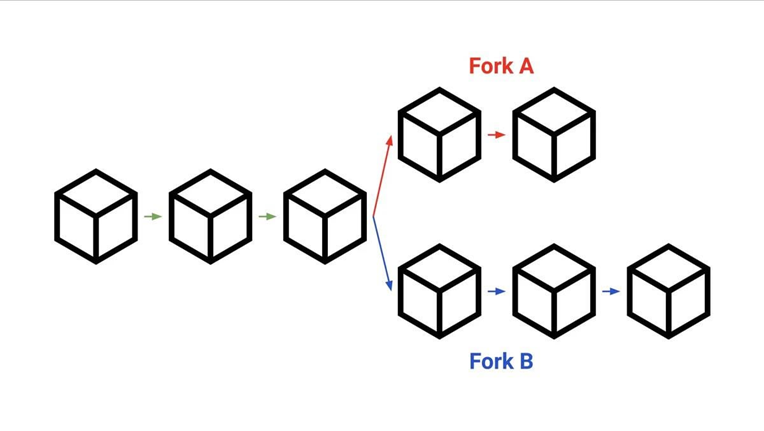1. What is Block Finality?

Block finality refers to the point at which a transaction becomes irreversible and permanent once it is confirmed and added to a block in the blockchain. When a transaction achieves block finality, it can no longer be altered or undone, ensuring that the transaction is permanent and cannot be tampered with. This characteristic is one of the primary reasons why blockchain is considered immutable.
The concept of finality is vital to maintaining the integrity of a blockchain network. It is especially important for preventing issues like double-spending, where the same digital asset could potentially be used more than once. Block finality is achieved through consensus protocols, but it is not always immediate, as latency (the delay between submitting a transaction and its confirmation) plays a role in how quickly finality is reached.
2. How does Block Finality work?

Block finality is achieved differently depending on the type of consensus mechanism used by the blockchain network. The two most common consensus mechanisms are Proof-of-Work (PoW) and Proof-of-Stake (PoS).
-
Proof-of-Work (PoW): In PoW systems like Bitcoin, finality is achieved through a decentralized consensus mechanism where miners compete to add new blocks to the blockchain. If multiple miners broadcast the same block simultaneously, it creates a temporary split or fork in the chain. However, one of these forks will eventually become the longest chain as more blocks are added. The longest chain is accepted as the valid one, and blocks on shorter chains are discarded. Once a block is part of the longest chain, its transactions are considered final, as they are unlikely to be reversed.
-
Proof-of-Stake (PoS): In PoS networks, finality is achieved through a different approach, with validators playing a crucial role in confirming the validity of the chain. For example, Ethereum’s Casper FFG (Friendly Finality Gadget) implementation introduces validators to confirm the validity of a chain after every 100 blocks. A block is only finalized after it receives approval from at least two-thirds of validators. Similarly, Tendermint, used by the Cosmos network, achieves finality when a block receives pre-votes and pre-commits from more than two-thirds of validators.
3. Types of Blockchain Finality

Blockchain finality can be classified into four main types based on the level of certainty and permanence of transaction finality. These include:
-
Probabilistic Finality: Probabilistic finality is the most common form of finality, especially in PoW blockchains like Bitcoin. In this model, the probability of a transaction being reversed decreases as more blocks are added to the chain. A transaction is considered "final" when it is part of a block in the longest chain, but there is still a chance, however small, that it could be reversed if a longer chain is found. However, after several confirmations, this probability becomes negligible.
-
Economic Finality: Economic finality is achieved through financial incentives and penalties. In PoS networks, validators are required to stake a certain amount of cryptocurrency as collateral. If a validator acts maliciously or attempts to revert a transaction, they risk losing their staked funds. This economic disincentive makes it financially costly to revert transactions, providing a high degree of finality.
-
Absolute Finality: Absolute finality represents the highest level of finality, where a transaction, once confirmed, is completely irreversible. This level of finality is achieved through systems like Ripple and Stellar, which use federated consensus mechanisms. In these systems, trusted validators confirm the validity of blocks, ensuring that once a transaction is included in a block, it is final with no possibility of reversal.
-
Instant Finality: Instant finality occurs when a transaction is confirmed and irrevocable almost immediately after being broadcast to the network. Achieving instant finality requires advanced consensus mechanisms and fundamental changes in how blockchains process transactions. Decentralized protocols like Shardeum strive to offer near-instant finality, providing a high degree of certainty that transactions are final.
4. How does finality affect blockchain networks?

Finality plays a crucial role in ensuring the reliability and security of blockchain networks. The assurance that once a transaction is confirmed it cannot be reversed is vital for several reasons:
-
Preventing Double-Spending: One of the main concerns in any blockchain network is the possibility of double-spending, where a user might spend the same digital asset twice. Finality prevents this by ensuring that once a transaction is recorded in the blockchain, it cannot be altered or undone, securing the integrity of the asset.
-
Smart Contracts: Blockchain finality is also essential for the effective functioning of smart contracts. These self-executing contracts rely on blockchain transactions to enforce agreements between parties. Finality guarantees that once the conditions of a smart contract are met, the outcome is irreversible, which is necessary for the reliability of these contracts.
-
Decentralized Applications (DApps): DApps that run on blockchain networks rely on finality to ensure the integrity and consistency of their operations. Users of DApps can trust that any action taken on the blockchain, once finalized, is secure and permanent.
Conclusion
Block finality is a fundamental concept that underpins the security and reliability of blockchain networks. Whether achieved through PoW or PoS mechanisms, finality ensures that once a transaction is recorded in a block, it becomes immutable and irreversible. Different types of finality, including probabilistic, economic, absolute, and instant finality, offer varying levels of certainty and permanence, depending on the consensus protocol in use. As blockchain technology continues to evolve, understanding block finality will remain essential to understanding how decentralized networks ensure trust, security, and immutability.
Read more:

 English
English Tiếng Việt
Tiếng Việt.png)
.jpg)

.jpg)
.jpg)
.jpg)

.jpg)
.jpg)

.jpg)
.jpg)
.jpg)




